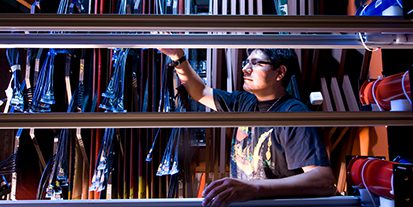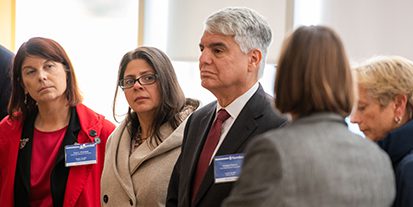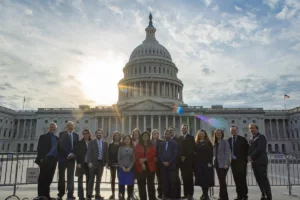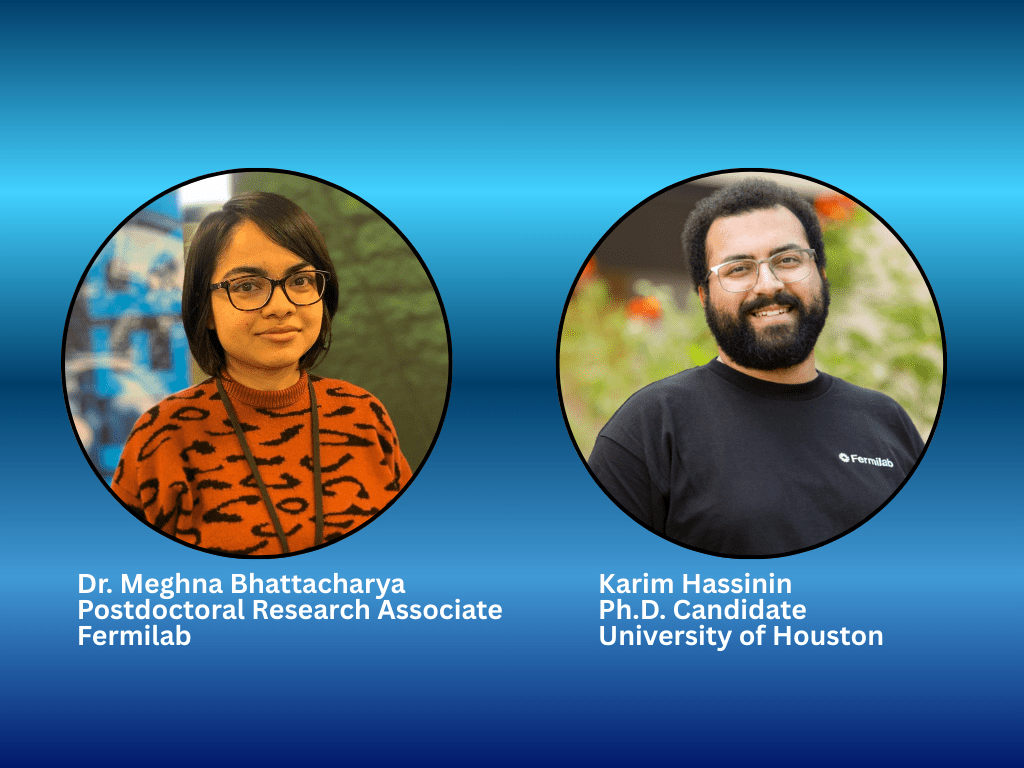Dr. Meghna Bhattacharya, a Postdoctoral Research Associate at Fermi National Accelerator Laboratory (Fermilab), and Karim Hassinin, a Ph.D. Candidate at the University of Houston, are among this year’s selected participants in the 2025 Science Policy & Advocacy for Research Competition (SPARC), hosted by the Universities Research Association (URA).
SPARC is a 10-week seminar series designed to equip scientists with essential skills in science policy and communication, helping them translate complex research into clear messages for nontechnical audiences.
For Dr. Bhattacharya and Hassinin, the program offers a valuable opportunity to sharpen their ability to communicate their work on one of physics’ most puzzling subjects: neutrinos.
Neutrinos are tiny, neutral particles that rarely interact with matter. Though difficult to detect, they are the most abundant massive particles in the universe, produced in natural and man-made processes like stars and nuclear reactors. Yet, they remain one of the greatest mysteries in physics. Scientists are still working to determine their mass, how they interact with matter, and whether they hold clues to why the universe is made of matter rather than antimatter – key questions being explored at Fermilab, the U.S. Department of Energy’s premier laboratory for high-energy particle physics.
MEET KARIM HASSININ

Image: Karim Hassinin
During his first year of graduate school, Hassinin taught an undergraduate physics lab and saw that the students had different perspectives, forcing him to rethink the ways he needed to explain the material. When asked about science communication, Hassinin said “the technical details will always exist, but we need to show people what the [purpose] of science is and how science affects our lives. Most of our lives depend on technology, which is not always straightforward [to understand], but technology depends heavily on science. SPARC has already shifted how I think about [bridging the gap between technical research and public understanding] since science communication is nontrivial.”
Hassinin’s research involves using computer simulations to study how neutrinos interact with different materials, based on ideas from physics theories. “We tell the generator how many neutrinos we want to use, what type of neutrino, and what material we want the neutrino to interact with,” said Hassinin. This work is just one piece out of many that are trying to understand neutrino interactions. “Without neutrino interactions, we don’t know anything about neutrinos,” noted Hassinin. When asked about the applications of this work, Hassinin shared that “we have to understand something deeply before we can understand how to apply it.”
In addition to SPARC, Hassinin spent the summer at Fermilab as a URA Visiting Scholar, collaborating on research for the Short Baseline Neutrino ICARUS program, a key part of a broader research effort at Fermilab to study the behavior of neutrinos. He worked on refining hardware and software for the neutrino detector, which is searching for signs of a potential new particle, the sterile neutrino, and contributing to the development of future large-scale experiments like the Deep Underground Neutrino Experiment (DUNE).
MEET Dr. MEGHNA BHATTACHARYA

Image: Dr. Meghna Bhattacharya
Dr. Bhattacharya’s research focuses on using machine learning and AI to develop algorithms that can identify neutrinos emitted during supernovae (star explosions). “These tools are designed to be integrated into DUNE, contributing to major questions about the universe’s evolution while also advancing computational techniques in physics,” said Dr. Bhattacharya.
Dr. Bhattacharya applied to SPARC because she wants to connect with a broader audience, to share her science story and the large impacts that her research can have. “Looking forward, I hope to grow as a communicator and advocate for science more effectively, not only to learn how to distill complex research into accessible narratives but also to pass down the excitement of my research.”
“The tools being developed to answer fundamental science questions often lead to broader real-world applications. For example, technologies like proton beams, originally used in particle physics, are now being used for cancer treatment,” highlighted Dr. Bhattacharya.
ABOUT SPARC
SPARC is designed to enhance awareness of the science policy engagement process for early career scientists to help bridge the gap across the science and policy sectors. Over a 10-week period, students engage virtually in active seminars with experts in science policy and communication. The program culminates in a competition with emerging SPARC Champions visiting Washington D.C. for the Science Policy Summit. Through seminars, workshops, and individual drafting sessions, participants develop research and communication skills to build their science policy portfolios.
ABOUT URA
Universities Research Association (URA) is a not-for-profit 501(c)(3) with a mission to augment the exchange of expertise between universities and national labs to accelerate innovation and scientific discovery. URA is an academic consortium composed of over 90 premier research universities across the United States, United Kingdom, and Italy headquartered in Washington, D.C; a parent company in the management and operation of Fermilab; a member of Honeywell’s National Technology and Engineering Solutions of Sandia (NTESS) for the management and operation of Sandia National Laboratories; and a financial steward for the National Science Foundation for nation’s participation in the Pierre Auger Cosmic Ray Observatory in Argentina.
For More Information:
URA Communications – communications@ura-hq.org







